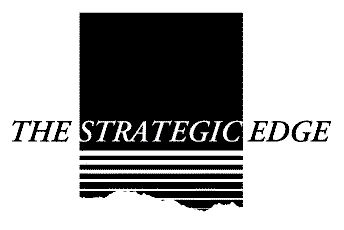FEASIBILITY STUDIES
Conducting a feasibility study is an essential step in the development process. The feasibility study highlights the reasons why or why not developers should develop a center or retailers open a store.
Site Evaluation
Through detailed fieldwork, the physical characteristics of an existing site and/or site plans for a proposed site are evaluated on the following criteria:
- Ingress / egress
- Parking
- Visibility
- Access
- Topography
- Signage
- Traffic counts
- Cotenants / adjacencies
Evaluating site and market characteristics is one of the more qualitative, and less quantitative aspects of market research for retailers. Experience plays an important role in evaluating the above criteria. The principals of The Strategic Edge provide over 70 years experience in retail site evaluation.
Trade Area Definition
Of critical importance to the shopping center developer, owner, or manager is the trade area. A trade area is the geography from which approximately 60% to 80% of your customers' sales originate. There are a variety of ways to define trade areas, and they differ for proposed versus existing centers.
The best trade area takes into account factors such as population density, competitive locations, demographic, housing and lifestyle characteristics, physical and psychological barriers and access patterns. For proposed developments or redevelopment situations, this requires skilled judgment and experience.
For existing centers, trade areas can be determined with precision by obtaining point of sale (POS) data or data from credit card purchases. If POS data is unavailable, intercept surveys are a good way to determine shopping habits, demographics, and customer penetration.
Expenditure Potential
Once a trade area has been developed for a store, a center, or a downtown, it is important to determine the expenditure potential by detailed business category for the geography. This information can then be compared with sales data to find the center, store, or downtown market share. Comparing expenditure potential and market share to the competitive framework can also help with leasing efforts.
The Strategic Edge uses U.S. Economic Census data and the most up-to-date population and demographic data to estimate trade area expenditure potential by detailed business category. Alternatively, expenditure potential estimates are available from third-party data providers. Expenditure potential and market share estimates form the basis of our analysis of supportable space.
Population & Demographics
The Strategic Edge uses the latest population, demographic, and lifestyle data along with client data to determine the best match between patron and location. The following graphic portrays two competing trade areas, population increase (shown in red) and population decline(shown in blue).
Competitive Environment
Once the market and site have been evaluated, a detailed inventory of of the competitive environment should be compiled. The Strategic Edge can compile an "in-house" competitive database using up-to-date internet sources and retail directories. For the most accurate description of competition, The Strategic Edge provides on-site fieldwork. A competitive field evaluation focuses on direct and indirect competitors. They are evaluated for their size, tenant mix, target market, site characteristics, and overall strength.
Sales Forecasting & Supportable Space
Estimations of expenditure potential and market share can be developed into a formal sales forecast. A number of forecasting techniques can also be used according to the particular type of retailer or developer; briefly they are analog database, regression models, and gravity models. Forecasts can also provide insight as to the optimal amount of space that can be supported by the trade area.
The Strategic Edge, Inc.
1899 Orchard Lake Road, Suite 105
Sylvan Lake, MI 48320
Phone: 248-322-5555
Fax: 248-322-5564
Email: TSE@thestrategicedge.com

